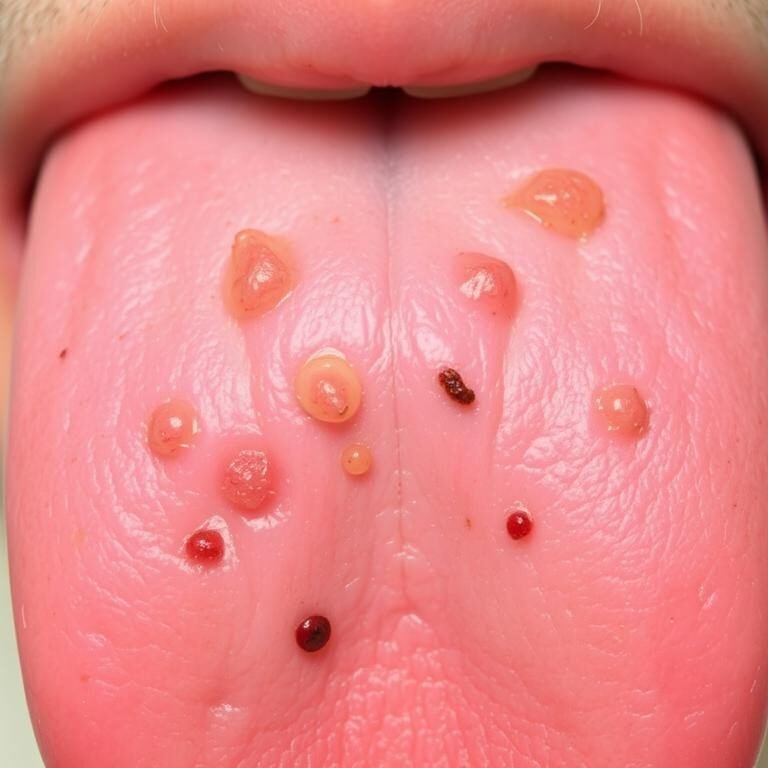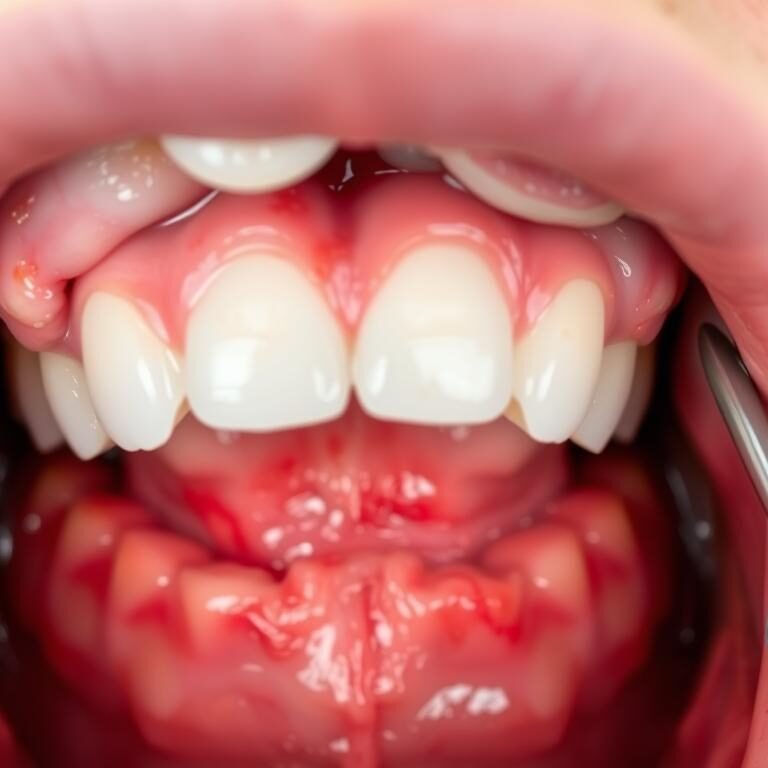Table of Contents
The Composition of Toothpaste
Toothpaste is a vital component of oral hygiene routines, playing a crucial role in maintaining healthy teeth and gums. The composition of toothpaste typically includes abrasives, fluoride, detergents, surfactants, humectants, flavoring agents, sweeteners, preservatives, and thickeners. These ingredients work together harmoniously to provide a complete cleaning experience while protecting and enhancing oral health.

Abrasives in toothpaste help to remove plaque and surface stains from teeth, promoting a clean and polished appearance. Fluoride, a key ingredient, strengthens tooth enamel and helps prevent cavities by remineralizing and protecting the teeth.
Detergents aid in the foaming action of toothpaste, assisting in the removal of debris and bacteria from the mouth. Surfactants reduce surface tension, allowing the toothpaste to spread evenly and reach all areas of the mouth effectively.
Humectants such as glycerin and sorbitol help maintain moisture and prevent the toothpaste from drying out. Flavoring agents and sweeteners improve the taste and texture of toothpaste, making it more enjoyable to use. Preservatives ensure the longevity and stability of the product, while thickeners contribute to the consistency and texture of the toothpaste.
The Role of Abrasives in Toothpaste
Abrasives play a crucial role in toothpaste formulations as they aid in the mechanical removal of dental plaque and surface stains. These abrasive particles are typically fine, insoluble materials that help to scrub away debris and bacteria from the teeth. Common abrasives found in toothpaste include calcium carbonate, silica, and aluminum hydroxide. These ingredients help to polish the teeth gently without causing damage to the enamel, promoting a clean and smooth surface.
| Aspect | Role of Abrasives in Toothpaste | Pros | Cons |
|---|---|---|---|
| Role | Abrasives help remove stains and plaque from teeth | – Aid in mechanical cleaning | – Can cause enamel erosion if too abrasive |
| – Enhance polishing of tooth surfaces | – May cause tooth sensitivity | ||
| – Contribute to the overall cleaning process | – Abrasive particles may be harsh on gums |
In addition to their cleaning action, abrasives also assist in enhancing the effectiveness of other active ingredients present in the toothpaste. By removing plaque and buildup, the abrasives create a clear pathway for fluoride and other beneficial agents to interact with the tooth surface, thus improving their overall efficacy in preventing cavities and promoting oral health. Therefore, the careful selection and balance of abrasives in toothpaste formulations are crucial for ensuring optimal cleaning and protective benefits for the teeth and gums.
The Function of Fluoride in Toothpaste
Fluoride plays a crucial role in toothpaste by aiding in the prevention of dental cavities. This mineral helps to strengthen the enamel of the teeth, making them more resistant to acid attacks from plaque bacteria. Fluoride also promotes remineralization of the enamel, which can reverse early stages of tooth decay.
In addition, fluoride inhibits the growth of harmful bacteria in the mouth, reducing the risk of cavities and gum disease. By incorporating fluoride into toothpaste, individuals can improve their overall oral health and lower their chances of developing dental issues. It is recommended by dental professionals as an essential ingredient in maintaining strong and healthy teeth.
The Importance of Detergents in Toothpaste
Detergents are a vital component in toothpaste formulations, playing a crucial role in ensuring effective cleaning of the teeth. These surfactants help to break down and disperse particles of food debris, plaque, and bacteria that can accumulate on the teeth and gums. By reducing surface tension, detergents enable the toothpaste to spread easily throughout the mouth, reaching all areas for a thorough clean.

Moreover, detergents in toothpaste create foam or lather, enhancing the overall oral care experience. This foaming action helps to distribute active ingredients evenly, ensuring their optimal contact with the tooth surfaces. The presence of detergents not only aids in the mechanical removal of debris but also contributes to the refreshing sensation that many individuals associate with the act of brushing their teeth.
The Action of Surfactants in Toothpaste
Surfactants play a crucial role in toothpaste formulations by aiding in the dispersion of ingredients and enhancing the overall cleaning efficacy. These surface-active agents help to reduce the surface tension of the toothpaste, allowing it to reach all areas of the mouth and effectively remove debris and plaque from the teeth and gums. Surfactants also contribute to the foaming action of toothpaste, which helps in dislodging food particles and bacteria from hard-to-reach areas, promoting a thorough and refreshing oral hygiene experience.
Furthermore, surfactants in toothpaste assist in emulsifying fats and oils, facilitating their removal during brushing. This action helps to prevent the buildup of plaque and tartar, ultimately contributing to improved oral health outcomes. By incorporating surfactants into toothpaste formulations, manufacturers can enhance the product’s ability to deliver a superior cleaning performance and promote a healthier mouth environment for individuals of all ages.
The Significance of Humectants in Toothpaste
Humectants play a crucial role in toothpaste formulations by helping to retain moisture and prevent the product from drying out. Common humectants used in toothpaste include glycerin, sorbitol, and propylene glycol. These ingredients not only maintain the consistency of toothpaste but also help in ensuring a smooth and creamy texture that enhances user experience.
| Aspect | Significance | Pros | Cons |
|---|---|---|---|
| Humectants | Retain moisture, preventing toothpaste from drying out | Prevents the toothpaste from hardening and becoming unusable | May increase the stickiness of the toothpaste, making it difficult to rinse out of the mouth |
| Moisturizing | Helps maintain the consistency of toothpaste | Keeps the toothpaste smooth and easy to squeeze out of the tube | Some people may be sensitive or allergic to certain humectants |
| Oral health | Enhances the effectiveness of active ingredients | Allows active ingredients to remain stable and active for longer periods | Humectants can contribute to the sweetness of toothpaste, potentially leading to tooth decay if not rinsed thoroughly |
| Texture | Improves the texture and feel of toothpaste | Provides a pleasant sensation during brushing | Excessive use of humectants may lead to a slimy or gooey texture, which is undesirable for some users |
| Overall efficacy | Contributes to the overall efficacy of toothpaste | Helps maintain the integrity of the toothpaste formula | Some humectants may interact with other ingredients, affecting their efficacy |
Moreover, humectants in toothpaste assist in preventing the toothpaste from hardening or becoming gritty over time, thus preserving its effectiveness throughout its shelf life. By attracting and holding onto moisture, humectants contribute to the overall stability and usability of the toothpaste. Their presence also helps in keeping the toothpaste soft and pliable, making it easier to dispense and apply onto the toothbrush for effective oral hygiene maintenance.
The Role of Flavoring Agents in Toothpaste
Flavoring agents play a crucial role in enhancing the overall user experience of toothpaste. The addition of flavors such as mint, citrus, or bubblegum helps mask the inherent taste of other ingredients and promotes a fresh and pleasant sensation during brushing. This sensory aspect is particularly important in encouraging regular and thorough oral hygiene practices, especially among children who may find the taste of traditional toothpaste unappealing.
Moreover, flavoring agents in toothpaste can also contribute to the psychological aspect of oral health. The pleasant taste can create a positive association with brushing, making it a more enjoyable and rewarding experience. This can lead to increased compliance with oral hygiene routines and ultimately contribute to better oral health outcomes. Choosing a toothpaste with a flavor that you enjoy can make your daily brushing routine more enjoyable and effective in maintaining good oral hygiene.
The Function of Sweeteners in Toothpaste
Sweeteners in toothpaste serve a dual purpose beyond just enhancing flavor. Firstly, they play a crucial role in masking the bitter taste of some active ingredients like fluoride, making the overall toothpaste experience more palatable for users. Additionally, sweeteners can also act as humectants, helping to maintain the moisture content of the toothpaste and prevent it from drying out, thereby ensuring its consistency and texture remain optimal for effective use and storage.
Commonly used sweeteners in toothpaste include sorbitol, saccharin, and xylitol, among others. These sweetening agents not only provide a pleasant taste but also contribute to the overall user experience, encouraging regular and thorough brushing habits. While the primary function of toothpaste is oral hygiene, the inclusion of sweeteners adds a touch of sweetness that can make the daily oral care routine more enjoyable and appealing to individuals of all ages.

The Purpose of Preservatives in Toothpaste
Preservatives in toothpaste play a crucial role in maintaining the product’s stability and preventing microbial growth. These ingredients help to extend the shelf life of toothpaste, ensuring its efficacy and safety for consumer use. By inhibiting the growth of bacteria and fungi, preservatives contribute to the overall quality and integrity of the toothpaste formulation.
Additionally, preservatives in toothpaste help to protect against contamination that could compromise the effectiveness of the product. Given that toothpaste is used daily and stored in bathrooms where moisture and warmth can promote bacterial growth, preservatives are essential for preserving the hygiene and longevity of the product. Their presence underscores the commitment to delivering a safe and reliable oral care solution for consumers.
The Contribution of Thickeners in Toothpaste
Thickeners play a vital role in toothpaste formulation, contributing not only to its texture and consistency but also enhancing the overall user experience. These additives help maintain the desired thickness of toothpaste, allowing for easy extrusion from the tube and spreading evenly on the toothbrush. Moreover, thickeners aid in preventing the separation of ingredients in toothpaste, ensuring a homogenous mixture that remains stable over time.
By ensuring the proper viscosity of toothpaste, thickeners facilitate better control during brushing, making it easier to maneuver the toothpaste around the mouth and reach all surfaces effectively. Additionally, these ingredients help improve the adherence of toothpaste to the toothbrush bristles, enhancing its ability to clean teeth thoroughly. Thickeners contribute significantly to the functionality and user satisfaction of toothpaste, aligning with the overarching goal of promoting good oral hygiene practices and maintaining optimal dental health.
The Effectiveness of Toothpaste in Removing Plaque
Toothpaste plays a crucial role in maintaining oral health by effectively removing plaque from teeth. Plaque, a sticky film of bacteria, can lead to tooth decay and gum disease if not properly removed. Toothpaste contains abrasives such as calcium carbonate or silica, which help to mechanically scrub away plaque buildup when brushing. These abrasives work by gently polishing the tooth surface, removing surface stains and biofilm, thus aiding in the prevention of dental issues associated with plaque accumulation.
In addition to abrasives, toothpaste often contains fluoride, a key ingredient that helps strengthen tooth enamel and protect against cavities. Fluoride aids in the remineralization of weakened areas of the enamel, making teeth more resistant to acid attacks from bacteria in plaque. By incorporating fluoride into toothpaste, it enhances the efficacy of plaque removal by providing added protection against dental caries.
The Mechanism of Toothpaste in Preventing Cavities
Toothpaste plays a crucial role in preventing cavities due to its unique mechanism of action. One key component in toothpaste that aids in cavity prevention is fluoride. Fluoride helps to strengthen tooth enamel, making it more resistant to acid attacks from plaque bacteria. By incorporating fluoride into toothpaste, it enhances the remineralization process, preventing the formation of cavities.
Another essential aspect of toothpaste in cavity prevention is the presence of abrasives. Abrasives help to remove plaque and food particles from the teeth, reducing the risk of cavities by maintaining a clean oral environment. The abrasive action of toothpaste, when combined with proper brushing technique, is effective in mechanically removing plaque and preventing its accumulation, thus contributing to overall dental health and cavity prevention.
The Impact of Toothpaste in Promoting Oral Health
Toothpaste plays a crucial role in promoting oral health by effectively combating plaque buildup and preventing cavities. The formulation of toothpaste typically includes key ingredients such as fluoride, abrasives, detergents, surfactants, humectants, flavoring agents, sweeteners, preservatives, and thickeners, each contributing to its overall effectiveness. Fluoride, a well-known mineral, is added to toothpaste for its ability to strengthen tooth enamel and reduce the risk of tooth decay. Abrasives, on the other hand, aid in removing surface stains and plaque, promoting cleaner and healthier teeth.
Moreover, detergents and surfactants in toothpaste facilitate the removal of food debris and bacteria, enhancing the cleaning action of brushing. Humectants help maintain moisture in the toothpaste, preventing it from drying out and ensuring a smooth texture. Flavoring agents and sweeteners not only improve the taste but also make toothbrushing a more pleasant experience, encouraging regular oral hygiene habits. Lastly, preservatives and thickeners contribute to the stability and consistency of the toothpaste, ensuring its effectiveness over time. By incorporating these components, toothpaste serves as a vital tool in maintaining optimal oral health and preventing dental issues.
The Consideration of Personal Preferences in Choosing Toothpaste
Choosing the right toothpaste is a crucial element in maintaining good oral health. Personal preferences play a significant role in this decision-making process. Factors such as flavor, texture, ingredients, and specific oral health needs all come into play when selecting the most suitable toothpaste for individual use.
Some individuals may prioritize a minty flavor for a refreshing sensation, while others may prefer a milder taste or even a specific flavor variant. Texture also varies among toothpaste products, with options ranging from gels to pastes to cater to different preferences. Understanding one’s oral health needs, such as sensitivity, enamel strengthening, or cavity prevention, is essential in making an informed decision when selecting a toothpaste that aligns with personal preferences and requirements.
The Integration of Toothbrushing and Flossing with Toothpaste
When it comes to maintaining good oral health, the integration of toothbrushing and flossing with toothpaste plays a crucial role. Toothbrushing helps in removing plaque and food debris from the surfaces of the teeth, while flossing targets the areas between the teeth where the brush can’t reach. By combining these two activities with the use of toothpaste, individuals can effectively clean their teeth and gums, reducing the risk of dental issues such as cavities and gum disease.
Toothpaste acts as a key component in this oral hygiene routine by enhancing the cleaning process. Its ingredients, such as abrasives, detergents, and fluoride, work together to remove plaque, strengthen enamel, and protect against decay. By ensuring that toothpaste is properly used in conjunction with toothbrushing and flossing, individuals can maximize the benefits of their oral care routine and maintain optimal dental health for the long term.
What are the key components found in toothpaste?
The main components found in toothpaste include abrasives, fluoride, detergents, surfactants, humectants, flavoring agents, sweeteners, preservatives, and thickeners.
How does fluoride in toothpaste benefit oral health?
Fluoride helps strengthen tooth enamel, making it more resistant to decay and cavities.
What role do detergents play in toothpaste?
Detergents help to create foam and break down plaque and debris, making it easier to remove them while brushing.
How do surfactants contribute to the effectiveness of toothpaste?
Surfactants help to evenly distribute the toothpaste, allowing it to reach all areas of the mouth and teeth for thorough cleaning.
Why are humectants important in toothpaste?
Humectants help to prevent the toothpaste from drying out and maintain its texture and consistency.
What is the purpose of flavoring agents in toothpaste?
Flavoring agents are added to toothpaste to improve the taste and make the brushing experience more pleasant.
How do sweeteners impact the overall function of toothpaste?
Sweeteners are added to toothpaste to enhance the taste and encourage regular use, especially for individuals who may find the taste of toothpaste unpleasant.
Why are preservatives necessary in toothpaste?
Preservatives help to prolong the shelf life of toothpaste and prevent the growth of harmful bacteria.
How do thickeners contribute to the formulation of toothpaste?
Thickeners help to give toothpaste its desired consistency and texture, making it easier to apply and use.
What is the main goal of integrating toothbrushing and flossing with toothpaste?
The integration of toothbrushing and flossing with toothpaste aims to provide comprehensive oral care by combining the mechanical action of brushing and flossing with the benefits of toothpaste ingredients for optimal oral health.











